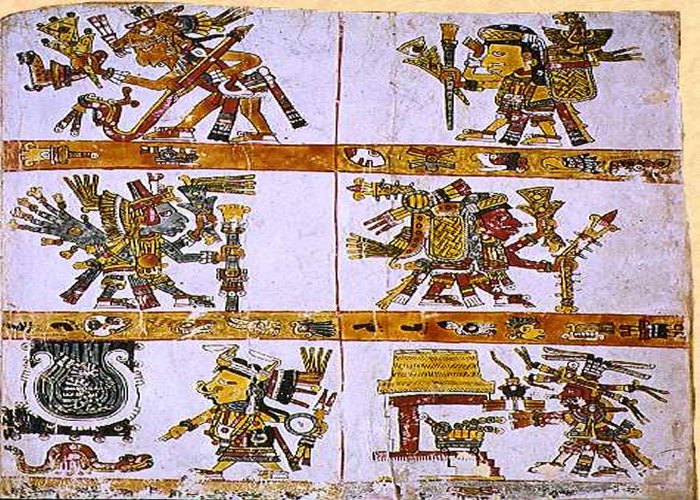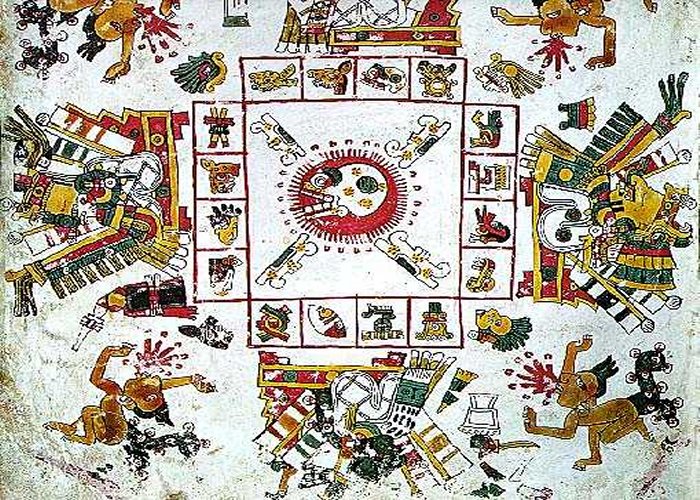Codex Borgia: Pre-Columbian Mexican Manuscript Of Great Importance
A. Sutherland - AncientPages.com - The Codex Borgia (or Codex Yoalli Ehēcatl) has a somewhat obscure past.
There is a special group of mostly pre-Columbian manuscripts that originate from central Mexico. These documents have either religious or historical significance.
However, the pre-Columbian codices of the Mixtec people of the state of Oaxaca in the southern part of the Republic of Mexico, are known as having geographical and historical content.
The place of origin and the linguistic identity of the creators of the codices have been the subject of considerable debate.
The documents were first identified by Eduard Seler (1849- 1922), a prominent German anthropologist, ethnohistorian, linguist, epigrapher, academic and Americanist scholar, who focused on the study of pre-Columbian era cultures in the Americas.
The Codex Borgia is a Mesoamerican ritual and divinatory document, which was probably written before the Spanish conquest of Mexico, somewhere within what is now southern or western Puebla. It is difficult to read and interpret this codex the way it was done by ancient Aztec priests.
See also:
Ehecatl: The Snake-Bird Deity And God Of Wind Feared And Respected By The Aztecs
According to one suggested explanation, the codex was rescued from a public burning of "superstitious and idolatrous" books in Mexico, in 1762, by a former member of the Congregation for the Evangelization of Peoples (Latin: Congregatio pro Gentium Evangelizatione) in Rome, responsible for missionary work.
Thus the Codex Borgia ended up in the hands of Cardinal Stefano Borgia in Rome and later, it was acquired by the Vatican Library; the Codex Borgia was digitally scanned and made available to the public. Others have suggested that the codex came to Italy with the exclusion of Jesuits from Spain in 1767.
The codex, written in very complex pictorial script is made of animal skins folded into 39 sheets. Each sheet is a square 27 cm by 27 cm (11x11 inches), for a total length of nearly 11 meters (35 feet). All but the end sheets are painted on both sides, providing 76 pages. The codex is read from right to left.
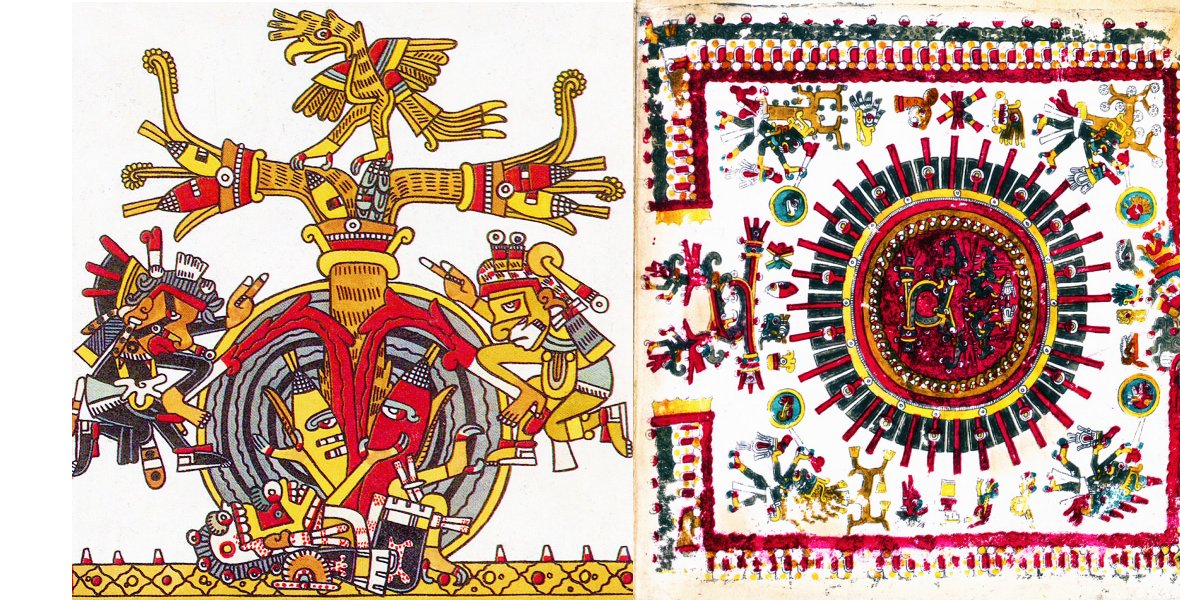
Codex Borgia, pre-Columbian painted manuscript. The exact place of origin of this codex is not known, however, there is no doubt, that it originates from the central Mexican highlands (possibly near Puebla or the Tehuacán Valley), an area which was under Aztec rule at the time of the conquest.
The Bordia Codex represents both a complex ritual cult (associated with the only one town, Cholula) and the calendar of Mixteca. Like other Mesoamerican cultures, the Mixtec used a 260-day sacred calendar. The tonalpohualli (in Nahuatl Aztec language, means "count of days") is an Aztec version of this 260-day calendar, used widely in pre-Columbian Mesoamerica.
A day is a combination of a number, called the coefficient, and a day sign.
This calendar is neither solar nor lunar,
The scenes depicted in the codex are painted on both sides and painted over with a white gips och krita (gesso). They are read from top to bottom and one must rotate the manuscript 90 degrees in order to view the codex correctly. The Codex Borgia is organized into a screen-fold. Single sheets of the hide are attached as a long strip and then folded back and forth.
The Codex Borgia has eighteen pages devoted to astronomical descriptions related to the rainy and dry season. The longest sequence of the codex is enigmatic and unique; it could be an important account of historical events, probably related to Teotihuacan and Tula and many rituals and ball games.
Written by – A. Sutherland - AncientPages.com Senior Staff Writer
Copyright © AncientPages.com All rights reserved. This material may not be published, broadcast, rewritten or redistributed in whole or part without the express written permission of AncientPages.com
Expand for referencesReferences:
Diaz G. The Codex Borgia: A Full-Color Restoration of the Ancient Mexican Manuscript
More From Ancient Pages
-
 Did Neanderthals And Modern Humans Meet In The Czech Republic 50,000 Years Ago?
Archaeology | Jun 17, 2017
Did Neanderthals And Modern Humans Meet In The Czech Republic 50,000 Years Ago?
Archaeology | Jun 17, 2017 -
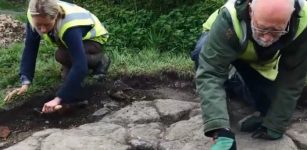 Uncovering 16th Century Scottish Royal Dockyards Used By King James IV’s Navy
Archaeology | May 24, 2018
Uncovering 16th Century Scottish Royal Dockyards Used By King James IV’s Navy
Archaeology | May 24, 2018 -
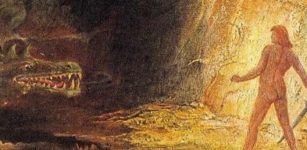 Sigurd Fafnirsbane – Legendary Dragon Slaying Warrior And His Magical Sword
Featured Stories | Oct 30, 2017
Sigurd Fafnirsbane – Legendary Dragon Slaying Warrior And His Magical Sword
Featured Stories | Oct 30, 2017 -
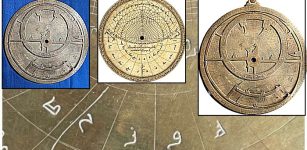 Rare Eleventh-Century Astrolabe Unearthed Recently Sheds Light On Islamic-Jewish Scientific Exchange
Scripts, Paintings & Inscriptions | Mar 4, 2024
Rare Eleventh-Century Astrolabe Unearthed Recently Sheds Light On Islamic-Jewish Scientific Exchange
Scripts, Paintings & Inscriptions | Mar 4, 2024 -
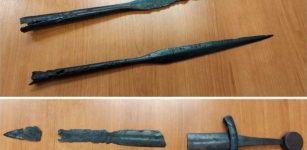 Swords And Spears Of The Yotvingians – A Long-Forgotten Ancient Warrior Culture Discovered In Poland
Archaeology | Jan 6, 2020
Swords And Spears Of The Yotvingians – A Long-Forgotten Ancient Warrior Culture Discovered In Poland
Archaeology | Jan 6, 2020 -
 The Tuli Mummy: Botswana’s Only Ancient Mummified Human Body Discovered So Far
Ancient History Facts | Oct 14, 2016
The Tuli Mummy: Botswana’s Only Ancient Mummified Human Body Discovered So Far
Ancient History Facts | Oct 14, 2016 -
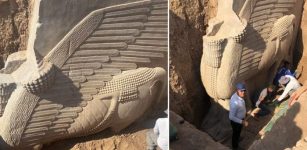 Impressive Huge Ancient Lamassu Statue Unearthed In Nineveh, Iraq
Archaeology | Oct 28, 2023
Impressive Huge Ancient Lamassu Statue Unearthed In Nineveh, Iraq
Archaeology | Oct 28, 2023 -
 Unexpected Discovery Of Roman Baths Under Split City Museum In Croatia
Archaeology | Dec 7, 2023
Unexpected Discovery Of Roman Baths Under Split City Museum In Croatia
Archaeology | Dec 7, 2023 -
 Rings Of Moray – Sophisticated Irrigation System In Sacred Valley Of The Incas, Peru
Ancient Technology | Sep 11, 2015
Rings Of Moray – Sophisticated Irrigation System In Sacred Valley Of The Incas, Peru
Ancient Technology | Sep 11, 2015 -
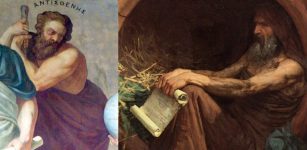 Antisthenes And Diogenes – Founders Of Cynicism Were Ancient Greek Philosophers
Ancient History Facts | Jan 7, 2018
Antisthenes And Diogenes – Founders Of Cynicism Were Ancient Greek Philosophers
Ancient History Facts | Jan 7, 2018 -
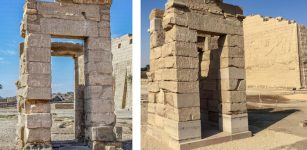 Ancient Egyptian Monuments Threatened By Climate Change Restored By Oriental Institute
News | Mar 9, 2023
Ancient Egyptian Monuments Threatened By Climate Change Restored By Oriental Institute
News | Mar 9, 2023 -
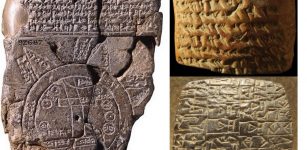 Cuneiform Tablets: One Of The Earliest Systems Of Writing Invented By The Sumerians
Civilizations | May 8, 2017
Cuneiform Tablets: One Of The Earliest Systems Of Writing Invented By The Sumerians
Civilizations | May 8, 2017 -
 Eduba: Scribal School In Ancient Mesopotamia
Ancient History Facts | Jun 29, 2016
Eduba: Scribal School In Ancient Mesopotamia
Ancient History Facts | Jun 29, 2016 -
 Unique Bronze Age Fortress Discovered In Galway, Ireland
Archaeology | Jun 25, 2022
Unique Bronze Age Fortress Discovered In Galway, Ireland
Archaeology | Jun 25, 2022 -
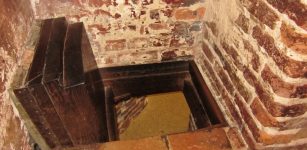 Nicholas Owen ‘Little John’ Who Paid Highest Price For His Ingenious, Camouflaged Places To Hide
Featured Stories | Dec 5, 2017
Nicholas Owen ‘Little John’ Who Paid Highest Price For His Ingenious, Camouflaged Places To Hide
Featured Stories | Dec 5, 2017 -
 Bacho Kiro Cave: Early Homo Sapiens Groups In Europe Faced Subarctic Climates
Archaeology | Sep 24, 2021
Bacho Kiro Cave: Early Homo Sapiens Groups In Europe Faced Subarctic Climates
Archaeology | Sep 24, 2021 -
 Dragon Empress Wu Zetian Challenged Confucian Beliefs Against Female Rulers
Featured Stories | Dec 12, 2017
Dragon Empress Wu Zetian Challenged Confucian Beliefs Against Female Rulers
Featured Stories | Dec 12, 2017 -
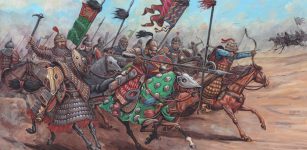 Mystery Of The Avars Who Conquered The Roman Empire Solved By Scientists
Civilizations | Apr 1, 2022
Mystery Of The Avars Who Conquered The Roman Empire Solved By Scientists
Civilizations | Apr 1, 2022 -
 Jormungand – Hideous Poison-Spewing Midgard Serpent Was One Of Loki’s Children
Featured Stories | Mar 31, 2018
Jormungand – Hideous Poison-Spewing Midgard Serpent Was One Of Loki’s Children
Featured Stories | Mar 31, 2018 -
 Bronze Age Royal Tombs Unearthed In Ruins Of Ancient City Of Pylos, Greece
Archaeology | Dec 30, 2019
Bronze Age Royal Tombs Unearthed In Ruins Of Ancient City Of Pylos, Greece
Archaeology | Dec 30, 2019

